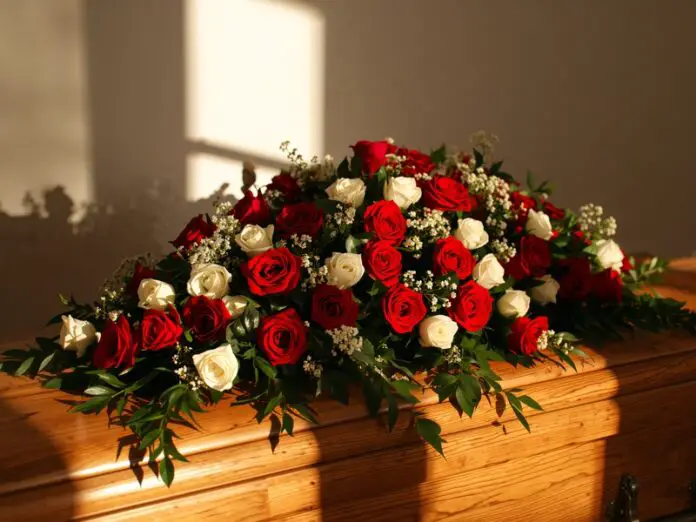The sudden death of Raila Odinga, Kenya’s former prime minister and one of Africa’s most influential political figures, sent shockwaves through the East African nation on Wednesday, October 15, 2025. The 80-year-old statesman collapsed during a morning walk while in India’s Kerala State, suffering a fatal heart attack that left a nation mourning the loss of a democracy champion who shaped generations of Kenyan political life. Odinga had been receiving medical treatment at an Ayurvedic clinic at the time.
Devamatha Hospital in Kerala confirmed Odinga’s death, stating he did not respond to resuscitation efforts after being rushed to the facility following his collapse. Indian Prime Minister Narendra Modi expressed sadness at the loss, describing Odinga as a towering statesman on the social media platform X.
At his official residence in Nairobi, somber scenes unfolded as mourners gathered, including President William Ruto, who had recently been both political rival and ally to the veteran politician. Ruto declared seven days of national mourning with flags flying at half-staff, calling Odinga’s death an immense and immeasurable loss to the nation.
The democratic reformer’s passing triggered days of tumultuous mourning events that exposed the depth of emotion Kenyans held for their beloved “Baba,” a Kiswahili honorific for a father figure. When Odinga’s body arrived at Nairobi’s main airport on Thursday morning via chartered airplane, receiving a water cannon salute, eager crowds overwhelmed planned ceremonial protocols. Mourners walked 18 miles alongside the military vehicle carrying his remains from the airport to a 60,000-capacity football stadium, waving twigs symbolizing peace and unity in Kenyan tradition.
Beatrice Adala, among the airport mourners, captured the national sentiment when she expressed that they were mourning as a country because they loved Baba so much, calling him the defender of the people.
The public viewing at the stadium on Thursday descended into chaos when mourners breached the presidential pavilion, prompting police to fire tear gas. A stampede erupted at the stadium gates as people fled, injuring many while leaders remained locked inside rooms for safety. Dozens of people suffered injuries after police fired live bullets and tear gas at the surging crowd. At least three people were killed.
“We can confirm that by the end of the day that our officers who were stationed at the Nairobi Funeral Home, also known as City Mortuary, [saw] three bodies brought in with gunshot wounds,” Hussein Khalid, Vocal Africa’s CEO, told the BBC.
Violence escalated further during Friday’s state funeral service at Nyayo National Stadium in Nairobi. A stampede during the public viewing following the service killed two people and injured more than 100 others. Doctors Without Borders reported treating 163 patients at the scene, with 34 referred to hospitals. The Kenyan Red Cross described chaos that left many in need of urgent care.
Odinga’s brother, Oburu, urged Kenyans on Friday night to remain calm and mourn peacefully. “Raila should not be teargassed in death. He has been teargassed enough when he was alive, please let us not cause a situation where he is teargassed again,” he said.
At Friday’s funeral, thousands filled the stadium where Odinga’s flag-draped casket was honored with an Anglican Church service. His body had lain in state at Parliament that morning, an honor typically reserved only for presidents and former presidents. President Ruto justified this exception by noting Odinga’s 15 years as a legislator and his pivotal role in shaping consequential laws in the nation’s history.
Ruto led mourners in singing Odinga’s favorite song, Harry Belafonte’s Jamaica Farewell, and credited him with helping steady the nation during months of anti-government protests earlier in the year. The two had signed a political pact that saw opposition party members appointed to cabinet positions after being rivals in the 2022 election.
Born on January 7, 1945, in Kisumu near Lake Victoria, Raila Amolo Odinga was the son of Kenya’s first vice president, Jaramogi Oginga Odinga. After studying engineering in East Germany and teaching at the University of Nairobi, he launched successful businesses including liquid petroleum gas distribution.
Odinga rose to prominence fighting President Daniel arap Moi’s one-party rule in the 1980s. Linked to a failed 1982 coup plot by air force officers, he faced treason accusations and spent much of the next decade imprisoned under harsh conditions that included alleged torture. He briefly went into exile in Europe in 1991 before returning to win a parliamentary seat in 1992 as an opposition lawmaker.
His activism helped steer Kenya from single-party rule toward vibrant multiparty democracy. Odinga ran for president five times over three decades, never succeeding but coming closest in 2007 when he lost narrowly to incumbent Mwai Kibaki in a disputed election that sparked ethnic violence killing hundreds. The electoral authority’s own leader later admitted uncertainty about whether Kibaki had actually won.
The post-election turmoil led to Odinga becoming prime minister in a unity government from 2008 to 2013, brokered by international mediators. In 2017, courts nullified a presidential election after his challenge, marking an African first, though he boycotted the subsequent vote.
Odinga’s family honored his request for burial within 72 hours, unusual for prominent Kenyan leaders. Following Saturday’s public viewing in Kisumu near his rural home, he was buried on Sunday in Bondo. Heavy security was deployed for Saturday’s event after five deaths occurred during the previous funeral gatherings.
His wife Ida, daughters Winnie and Rosemary, and son Raila Junior mourned publicly at Friday’s service. Ida urged peaceful mourning and noted her husband’s hatred of dishonesty and greed. Winnie, who accompanied him in India, led chants in the local Luo language, stating her father died strong, with dignity and pride after extending his usual morning walk from two to five rounds at the hospital where he was receiving treatment.

